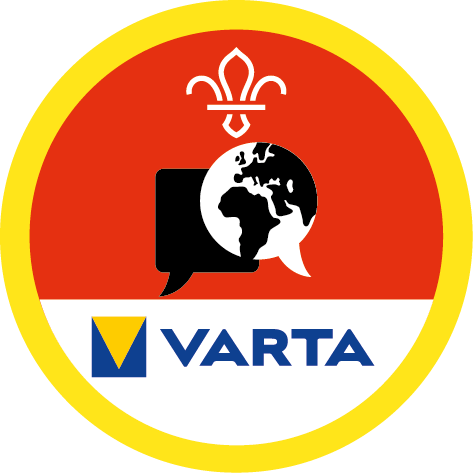
Make a Black history timeline
You’ll need
- Big pieces of paper
- Coloured pens or pencils
- Sticky tack
- Craft materials (for example, tissue paper, pipe cleaners, stickers)
Before you begin
- Use the safety checklist to help you plan and risk assess your activity. There's also more guidance to help you carry out your risk assessment, including examples.
- Make sure all young people and adults involved in the activity know how to take part safely.
- Make sure you’ll have enough adult helpers. You may need some parents and carers to help.
Planning and setting up this activity
- Decide what events you want to include on your timeline. We’ve included some ideas on this page.
- Write the dates of the events you’re including on pieces of paper, and place or stick them in a line in your meeting place.
- Print or write out each event. You’ll need at least the title and date of each event, but a bit of information is helpful too. It’s up to you whether you include all the information or pick out some key points.
- You may want to add some context to the timeline by explaining when other events happened, such as world war two started in 1939, William Shakespeare was born in 1564, Queen Victoria became queen in 1837, Scouts was founded in 1910, the internet was invented in 1989 and television broadcasts began in the UK in 1932.
Running this activity
Make the timeline
- Gather everyone together and tell everyone you’re going to be learning about black history in the UK. Ask if anyone knows anything about Black History Month or black history.
- Explain that black people have lived in Britain for hundreds of years. There’s a lot of black British history.
- Show everyone the timeline. Explain that everyone will get into groups or pairs, then try to work out which year an event happened.
- Everyone should get into small groups.
- Read out the title of an event and explain what happened.
- Each team should work together to decide which date it is, then someone from their team should go to where they think the event belongs on the timeline.
- Once everyone’s finished moving, reveal the answer and add the event on the timeline. This is so people know when a date’s been used.
- You could award points to the team who guessed the closest to the actual date.
- Everyone should keep playing until all the events are on the timeline.
- At the end, the team with most points, wins. You could give out bonus points for good teamwork, listening or communication.
- Once everyone has finished, you could give out books or other information sheets to ask people to find out some more facts to add to your timeline. Each team could find out about an inspiring black person or event in black history, then add it to the timeline.
Black History Month takes place every October in the UK. It started in the United States in 1926. In the UK, Black History Month began in 1987 and is an important opportunity to celebrate and learn about Black history. During this month, schools and communities hold events, activities, and discussions to highlight important figures, such as activists, artists, and leaders. This month is a chance for everyone to appreciate the rich culture and history of Black communities and to understand the impact they have had on our society. However, it’s important to remember that Black history is a part of history that people can (and should) learn about all year round.
This activity has been chosen as it celebrates Black history.
John Blanke: The Black Trumpeter (1507): John Blanke was a Black trumpeter who played for King Henry VII and King Henry VIII. He is one of the earliest recorded Black people in British history and appears in paintings from that time.
James Somerset’s Court Victory (1772): James Somerset, an enslaved man, fought a legal case in London to win his freedom. The court ruled in his favour, marking an important step in showing that slavery was not supported by British law.
Early Black Settlement in Sierra Leone (1787): After Britain abolished slavery, some Black people living in Britain, including former slaves, moved to Sierra Leone in West Africa to start a new settlement, with help from the British government.
Britain Abolishes the Slave Trade (1807): The British Parliament passed the Abolition of the Slave Trade Act, making it illegal for British ships to take people from Africa and sell them as slaves.
Slavery is Abolished in the British Empire (1833): In 1833, Britain passed a law ending slavery throughout its empire, meaning no one could legally own slaves in British-controlled lands any more.
Black Communities in British Cities (1919): After World War I, many Black people lived in port cities such as Liverpool and Cardiff. Despite tensions and unfair treatment, they formed close-knit communities that grew over the years.
First Black British Pilot (1945): Hugh Nelson became the first Black pilot in the Royal Air Force during World War II, inspiring future generations of Black aviators.
The Windrush Arrives (1948): The HMT Empire Windrush brought around 500 people from the Caribbean to Britain, helping to rebuild the country after World War II. These people, part of the Windrush Generation, played an important role in British society.
Notting Hill Race Riots (1958): In London’s Notting Hill, clashes between Black and white residents due to racial tensions led to violence. These events raised awareness of the growing issue of racism in Britain.
Notting Hill Carnival Begins (1959): The Notting Hill Carnival was started by Claudia Jones to bring people together and celebrate Caribbean culture after the 1958 race riots. It has since grown into one of the largest street festivals in Europe, filled with music, dancing and vibrant costumes.
Bristol Bus Boycott (1963): When the Bristol Omnibus Company refused to hire Black or Asian bus drivers, Paul Stephenson, along with Roy Hackett and Guy Bailey, organised a boycott. The community stopped using the buses until the company agreed to change its hiring policy. After several months, the company gave in and changed their policy.
First Race Relations Act (1965): Britain passed the Race Relations Act in 1965, making it illegal to treat people unfairly because of their race in public places. This was the first UK law aimed at fighting racial discrimination.
The Mangrove Nine (1970): The Mangrove Nine were Black activists who were put on trial after protesting against police harassment of the Mangrove Restaurant in Notting Hill, a popular spot for the Black community. The trial exposed racism in the police, and all nine were found not guilty of serious charges.
Creation of Black History Month in the UK (1976): Black History Month started in the US in the 1920s. It began in October 1976 in the UK. It celebrates the contributions and achievements of Black people throughout history. This month encourages schools and communities to learn about and celebrate diversity.
Brixton Uprising (1981): Tensions between the Black community and the police in Brixton, London, reached a breaking point during Operation Swamp 81, where heavy-handed police tactics, such as ‘stop and search’ angered residents. The resulting protests and riots drew national attention to the unfair treatment of Black people by the police, leading to calls for change.
The New Cross Fire (1981): A tragic fire at a house party in New Cross, London, killed 13 young Black people. Many believed the fire was a racist attack, and the way authorities handled it led to the Black People’s Day of Action, where thousands protested, demanding justice.
First Black Football Player for England (1982): Viv Anderson became the first Black footballer to play for the England national team.
First Black MPs Elected (1987): Diane Abbott, Bernie Grant, and Paul Boateng were elected to Parliament, becoming the first Black MPs in British history and helping to increase representation in politics.
Stephen Lawrence Case (1993): Stephen Lawrence, a Black teenager, was murdered in a racist attack in London. The police mishandling of his case led to public outrage, and the Macpherson Report in 1999 called out the police for ‘institutional racism’ changing how racial crimes were handled.
First Black Archbishop in the Church of England (2004): Dr. John Sentamu became the first Black archbishop in the Church of England when he was appointed as the Archbishop of York. His appointment was a proud moment for representation in British religious leadership.
First Black Briton Wins The Booker Prize (2019): Bernardine Evaristo became the first Black British author to win the prestigious Booker Prize for her novel Girl, Woman, Other, which tells the stories of Black women in Britain.
Black Lives Matter Protests in the UK (2020): The Black Lives Matter (BLM) movement started in the US in 2013 to protest against unfair treatment of Black people, especially by the police. It grew after the tragic death of George Floyd in 2020 after a police officer knelt on his neck for over nine minutes. In 2020, thousands of people across the UK took part in protests as part of the global Black Lives Matter movement, calling for an end to racism and unfairness, and for better treatment of Black people in the UK and beyond.
Reflection
This activity was all about learning about black history. What was the most surprising event or fact you learned about Black British history? Why did it surprise you? Which event do you think had the biggest impact on British society, and why? How do you think it changed things for Black people in Britain? Was there a specific person or event that inspired you or made you want to find out more about it? What about their story motivated you or made you think differently? If you could add one more event or person to the timeline, who or what would it be, and why do you think it’s important?
It’s important to learn about lots of different histories and cultures. How does learning about Black British history help you understand the world we live in today? What did you learn about the importance of celebrating diverse histories and cultures? Why is it important for everyone to learn about Black history?
You had to work as a team for this activity. How did working in groups help you understand the timeline better? What did you learn from your teammates? Did you enjoy working together to create the timeline? What skills did you use during this activity? For example, did you improve your teamwork, communication, or problem-solving skills?
We can tell others what we know too. How can you share what you learned with your family or friends? Do you think it’s important to keep talking about these topics? Why or why not?
Safety
All activities must be safely managed. You must complete a thorough risk assessment and take appropriate steps to reduce risk. Use the safety checklist to help you plan and risk assess your activity. Always get approval for the activity, and have suitable supervision and an InTouch process.
- Active games
The game area should be free of hazards. Explain the rules of the game clearly and have a clear way to communicate that the game must stop when needed. Take a look at our guidance on running active games safely.
- Online safety
Supervise young people when they’re online and give them advice about staying safe. Take a look at our online safety or bullying guidance. The NSPCC offers more advice and guidance, too. If you want to know more about specific social networks and games, Childnet has information and safety tips for apps. You can also report anything that’s worried you online to the Child Exploitation and Online Protection Command. As always, if you’ve got concerns about a young person’s welfare, including their online experiences, follow the Yellow Card to make a report.
- To make this activity easier, you could give people clues or hints or more information about the event. You could also include more markers, such as the dates of world war two, on the timeline.
- To make this activity harder, you could give people less information about each event. You could also just keep the timeline to the key dates you’re using, without any extra events marked on it.
- You may wish to include pictures with each event or date.
All Scout activities should be inclusive and accessible.
- You could use your timeline to help others learn, such as by putting it on display it in your meeting place.


